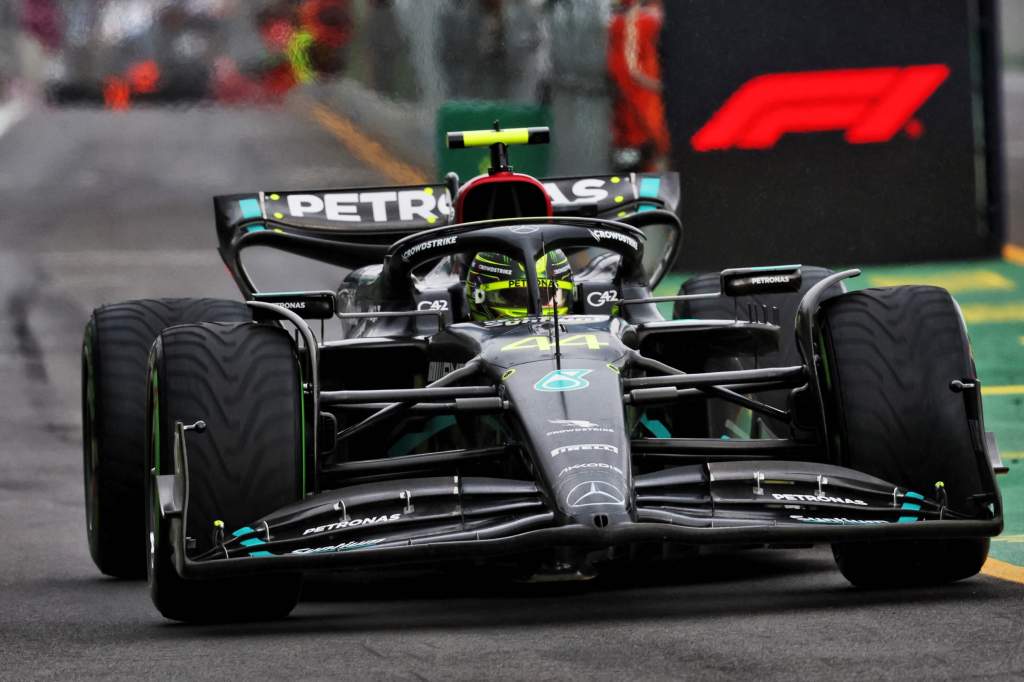Up Next

We’re 27 grands prix into Formula 1’s new ground effect era and former dominant force Mercedes has won just one of those and is further from Red Bull in 2023 than it was during its rude awakening in 2022.
It spent much of last year combating porpoising and bouncing problems, bringing upgrade after upgrade to remedy the W13’s issues and unlock the performance that its simulations had promised.
Mercedes made gains and was an occasional threat to Red Bull in the latter half of 2022 – with George Russell winning both races at Interlagos – but it fell backwards in 2023 and immediately expressed its regret at sticking with its concept for the W14.
Lewis Hamilton’s second-place finish in Melbourne remains the team’s only podium of 2023 so far – its worst podium haul at the start of a season since 2012 – but the team has planned a series of updates to change its development direction.

The first of those was set to debut at this weekend’s now-cancelled Emilia Romagna Grand Prix with new sidepods, front suspension and a floor all expected to feature.
It will provide the first glimpse of Mercedes’ new direction, one it hopes will set it on a path where it has the potential to catch and compete with Red Bull, which has dominated the ground effect era since pulling clear of Ferrari in the first half of 2022.
But how did Mercedes get here? What went so wrong with its previous concept, and why was it eventually forced to abandon it? Mark Hughes explained exactly that on the latest episode of The Race F1 Podcast.
The logic behind Mercedes’ initial direction
There was a sound logic behind Mercedes’ choice of car concept ahead of the new ground effect rules introduced at the start of 2022.
“Mercedes devised a totally different way of configuring its car under the ground effect regulations, different to what became the classical Red Bull way – which has become almost standardised, with only Ferrari and Mercedes the outliers now, albeit in different ways,” Hughes explained.
“What Mercedes did – instead of using a big undercut in the sidepod to accelerate the air down the sides of the body sealing the floor along the way – was forget about the undercut and the bulky sidepods it requires because they’re only that shape to allow you to cut an airflow-accelerating channel into them.
“So it decided it could more than compensate for the absence of that channel – formed by the undercut – by using the less bulky sidepods to create a greater area of exposed floor.
“The underfloor downforce is created by the pressure difference between the upper bodywork and the underfloor, high pressure on top and low pressure beneath, effectively sucking the car to the ground.
“The greater the area of an exposed floor, the greater that pressure difference, the greater, therefore, the downforce. The question is then, is it enough downforce to compensate for the lack of that airflow-accelerated channel?
“Mercedes believed there was, especially as it was able to use the side impact bar – also known as the sis bar – with an aerodynamic sheath to do some of the accelerating that was formerly done by the undercut.
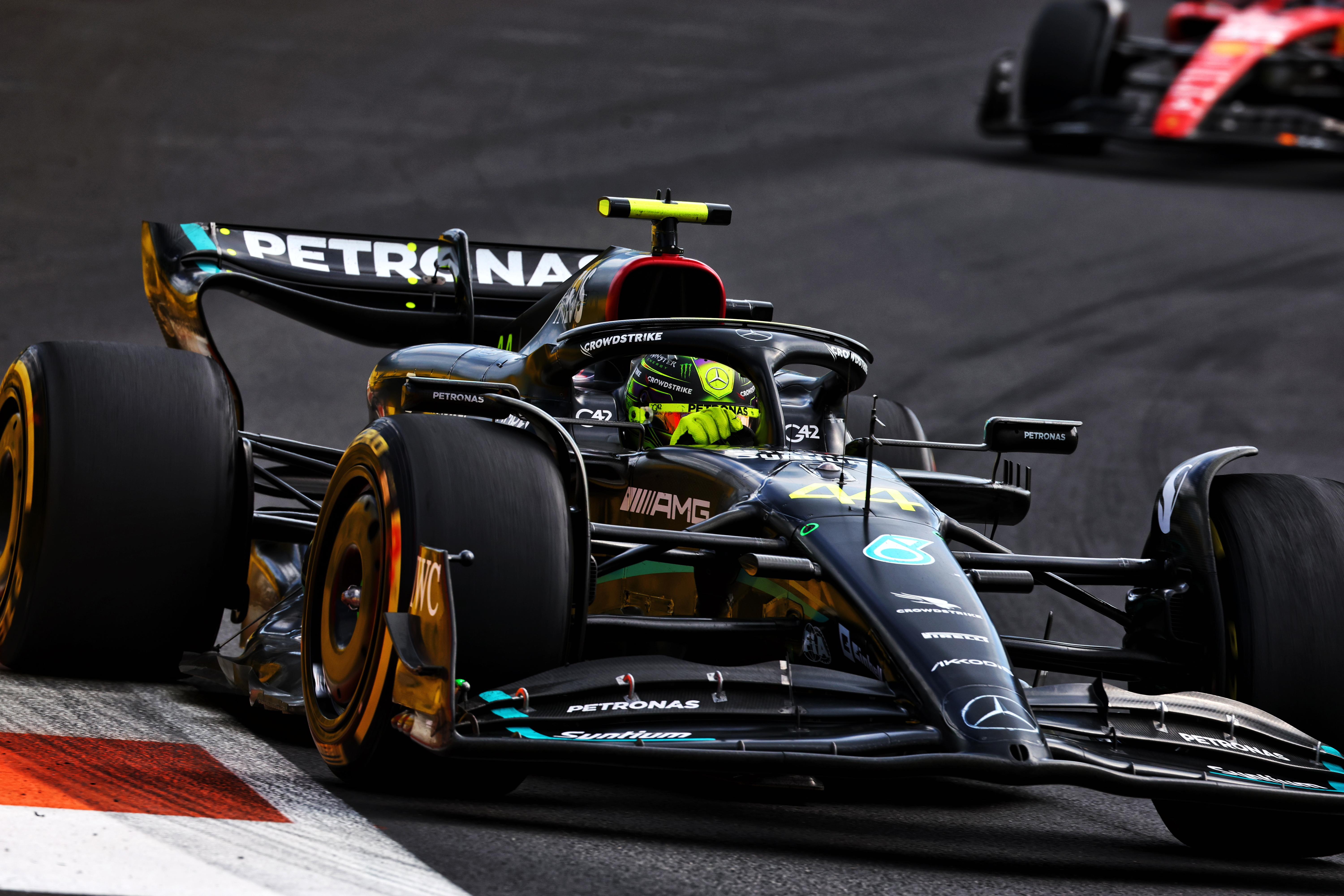
“So angled the appropriate way it would accelerate that air. This was another neat detail because that sis bar is by regulation only allowed to extend out as far as the widest part of the car below, which on other cars is the top of the sidepod but on the Mercedes, it can extend wider because the widest part of the car was right at the bottom as the absence of the bulky sidepods allowed the car to have a triangular section of tub, with the base of the triangle at the bottom.
“So it could legally have a wider sis bar than the others, helping it even more to overcome the lack of an undercut.
“So it was clever but to get the sis bar and the widest part of the tub aligned to full advantage it did involve moving the cockpit forward a little bit.”
Mercedes was tricked by its windtunnel figures
A key part of Mercedes’ downfall was believing numbers in the virtual world that couldn’t be replicated in real-world conditions – something visible from its brutal first shakedown at Silverstone in February 2022.
“Mercedes’ simulation gave sensational figures,” Hughes continued.
“Had the W13 worked the way simulation suggested it would, Red Bull and Ferrari would have been left for dust – it was that clear.
“Mercedes was going into that season believing it was going to have an enormous advantage and there was an exciting buzz leaking out about just how good this car was before it ran.
“The real world inconveniently got in the way of making those simulations accurate.”
Mercedes’ porpoising and bouncing struggles
Mercedes’ most infamous nemesis in 2022 wasn’t Red Bull like the year before but the porpoising that (literally) rattled its drivers to the point of minor injuries and kept it adrift from Red Bull and Ferrari’s early-2022 duels.
“The porpoising phenomenon hadn’t shown up in simulation, not just on the Mercedes, but not anywhere else either,” Hughes recounted.
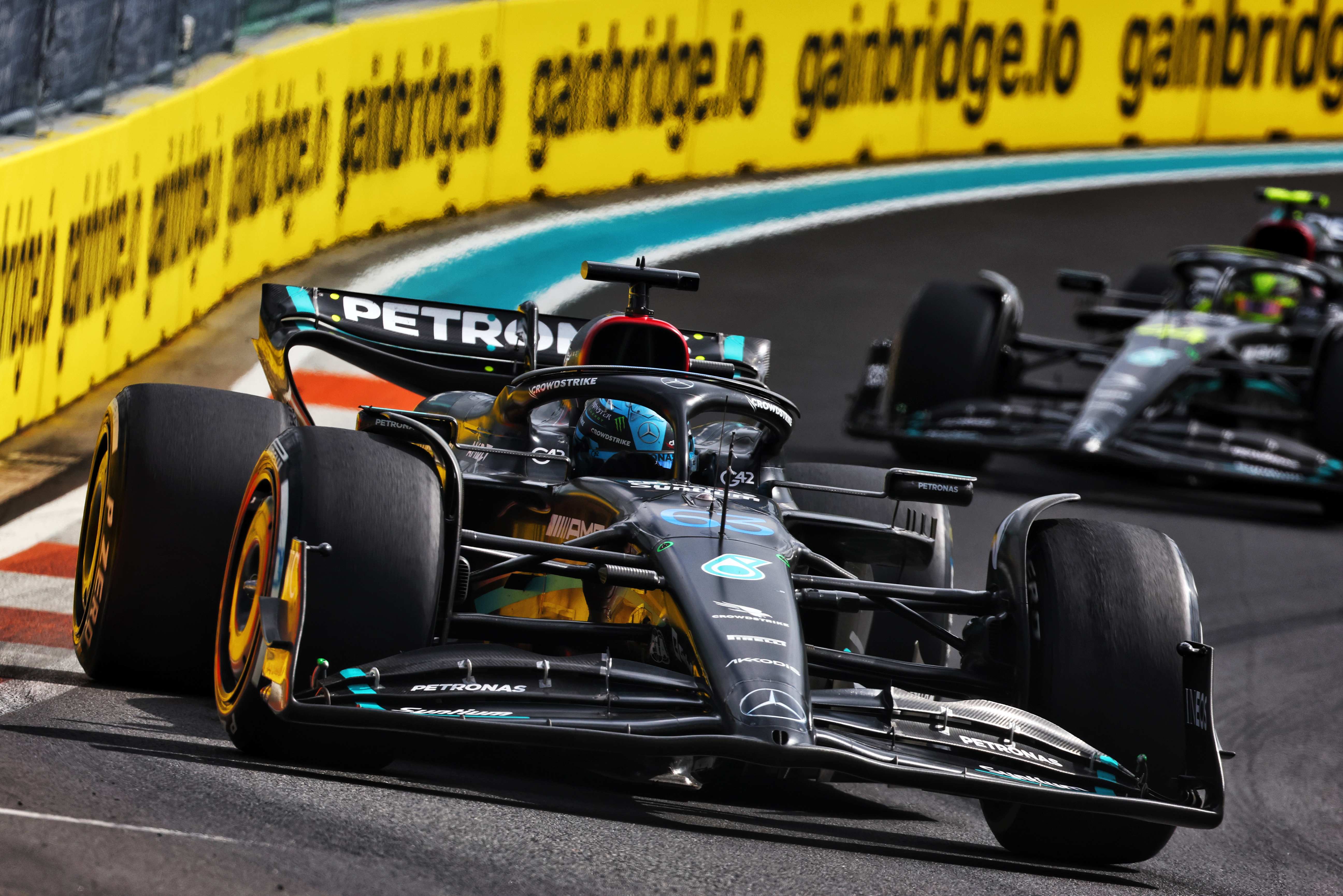
“So as throat tunnel gets closer to ground and downforce increases spectacularly eventually it gets too close, the underfloor downforce stalls, the back of the car rises up on its suspension, which unblocks the venturi and pulls the car back down – with the front of the car reacting to the rear going up and down. You get this porpoising motion.
“It not only makes the downforce widely inconsistent. It causes you to lock wheels and be slower into the corners, it makes the car really difficult to drive.
“What was extenuating the porpoising on the Mercedes was this huge area of exposed floor so as the car was pulled down the floor was like a canter lever and bending down, also extenuating that effect.
“So in order to keep the car away from the porpoising threshold it needed two things – 1) a stiffer heavier floor, 2) a greater rear ride height. The first one was relatively easy, the second was impossible.
“[The] pickup points in the gearbox design made it impossible to run the rear as high as was needed to stop the porpoising so in order to keep it from running too low, so it would resist the loads upon it at high speed, the suspension had to be run incredibly stiff.
“Together with the stiffer floor it cured the porpoising but it induced a different but related phenomenon of bouncing. Basically the suspension is now stiffer than the sidewall of the tyres. It brought the whole car into a resonance of vertical bouncing and it brought similar limitations of that of porpoising.
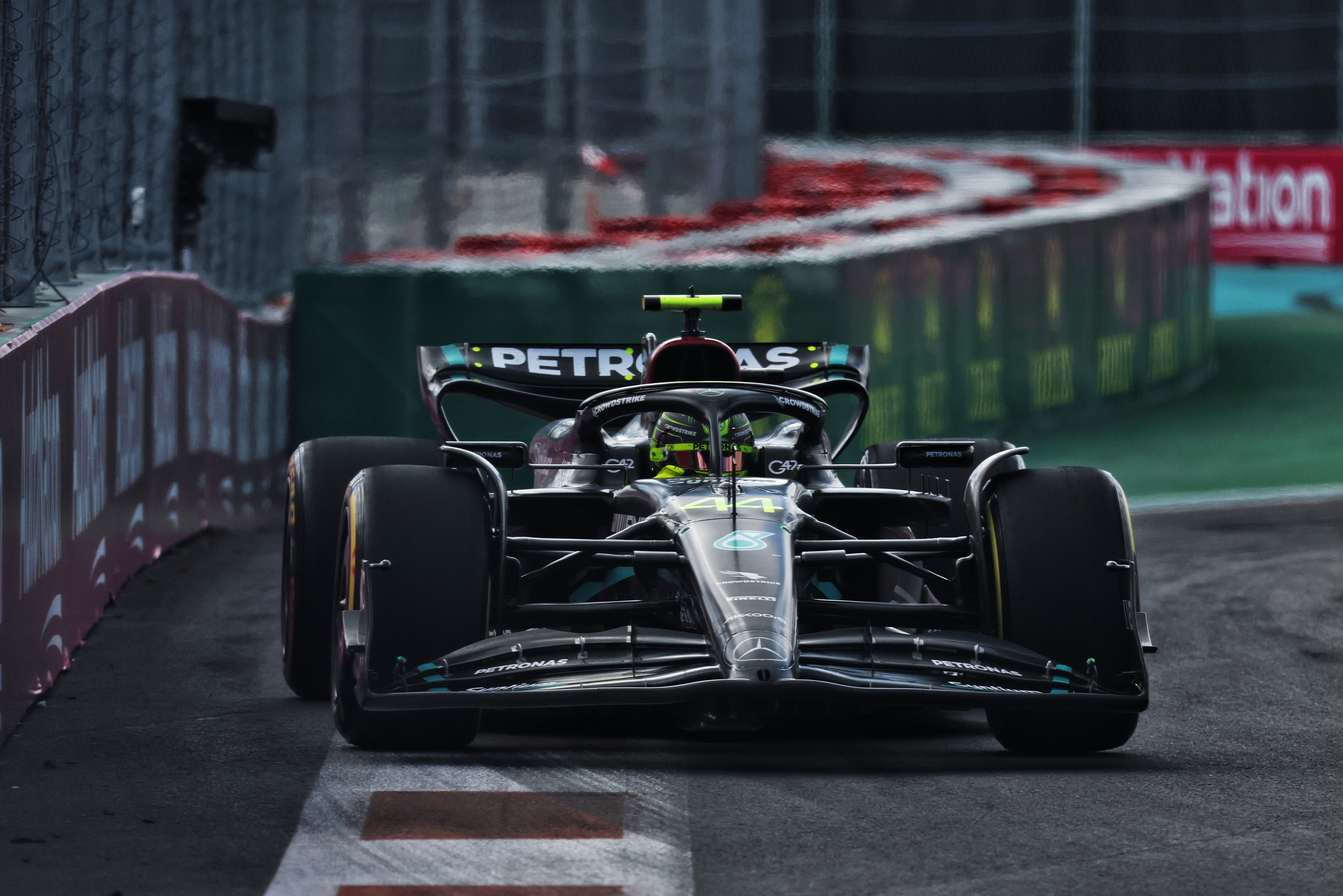
“Also, because the car hadn’t been as low as it was designed for, the underbody was producing less downforce than was anticipated. So to get the best laptime now required the use of more rear wing, so it was then slow on the straights too.
“The stiff suspension gave it a horrible feel-less trait in slow corners, making it unpredictable, you couldn’t really read what it was about to do. The bouncing made it unpleasant to drive, it was slow on the straights but it did have good high-speed downforce once it had stiffened the floor.”
Why Mercedes stuck with the concept for 2023
The obvious question for many was, why did Mercedes stick with its flawed concept for a second season of the regulations when Red Bull had led the way?
“Still with those sensational windtunnel simulation figures tantalising them, for this year’s W14, Mercedes decided to keep that basic aero philosophy with a redesigned rear suspension and gearbox, which gave it the appropriate range that it didn’t need to be so stiff and it made it more driveable and also helped by the anti-porpoising floor regulation tweaks,” Hughes explained of Mercedes’ logic.
“They could finally make that concept work as intended but it turns out that those first-order porpoising and bouncing problems that they had last year had simply hidden a more subtle limitation.
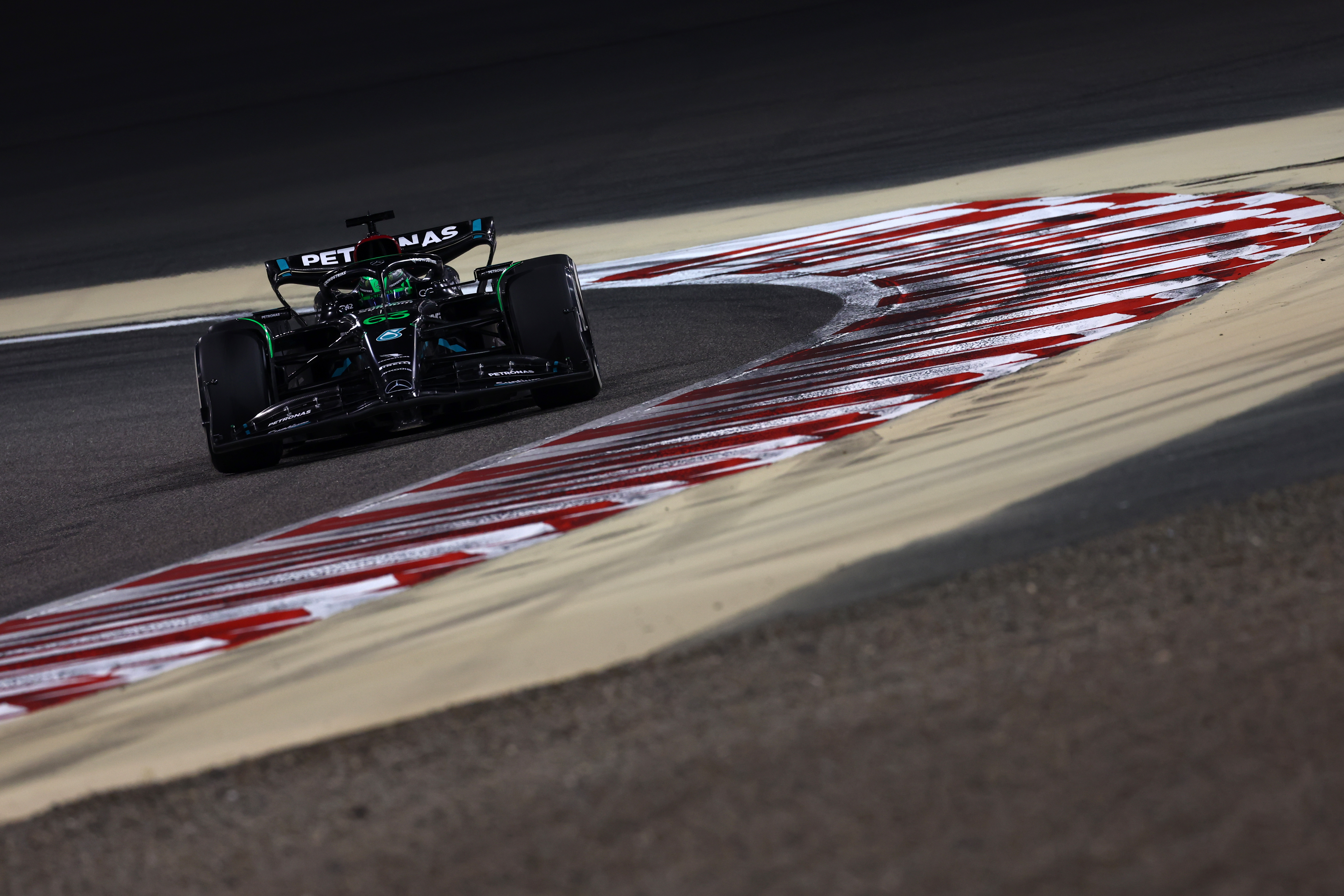
“The aero concept just isn’t as effective as a classic undercut. The exposed floor and the wide sis bar just did not give adequate compensation for the lack of that undercut channel, especially when measured against the Red Bull, which has made massive gains thanks to the way it has configured its suspension to limit pitch and dive.
“So the Mercedes now seems to run out of airflow capacity at high speed relative to the Red Bull so it’s down on high-speed downforce, which is the opposite of last year.
“Although it’s now competitive with Ferrari on straightline speed, it’s well behind the Red Bull and its spectacular DRS stall.
“With the designed rear suspension it doesn’t bounce anymore, its low-speed handling is not so horrible, it’s a faster car than last year’s. If you run them side-by-side, this one would definitely be faster. But it’s further off the pace than last year because of the gains made by Red Bull.
“The concept is just too limited and seems already to have plateaued. Not only that but the forward cockpit part of the concept doesn’t give Hamilton the sensations he needs to have confidence in the car. He says he feels disconnected from it.”
What to expect from upgrade
So that’s the state of play after two years of false excitement, headaches, head-scratching, crushing disappointment and rethinks – but what can we expect from the upgrade that was due to debut this weekend at Imola, but will now wait until Monaco?
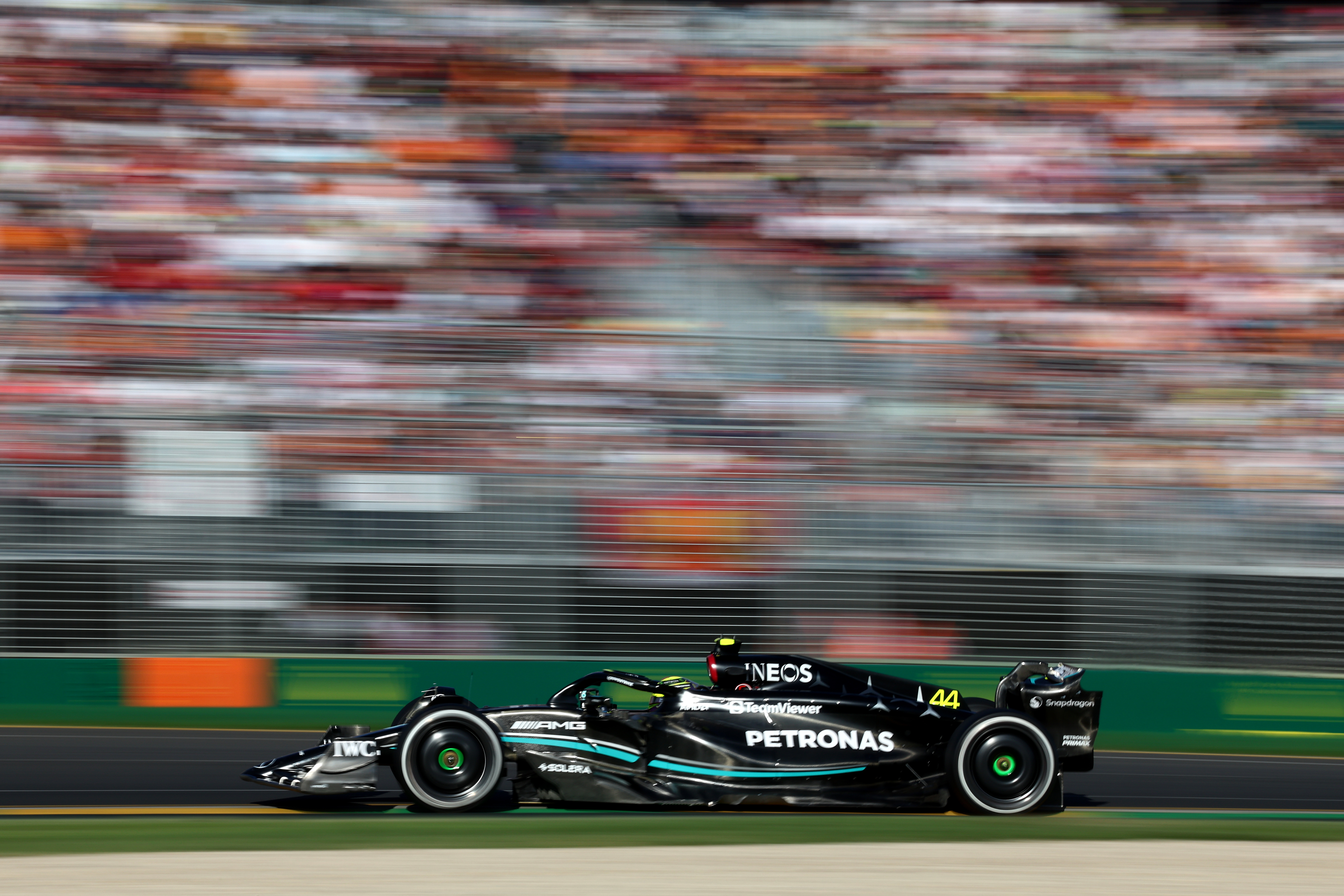
“We’re led to believe it’s sidepods, bodywork, floor but also front suspension, which is interesting because that’s part of the key that’s made the Red Bull concept work so effectively,” Hughes noted.
“So we’d expect to see a little bit more anti-dive built into the geometry probably, the one it has run so far looks to have about 15 degrees of anti-dive. Something like that. Whereas the Red Bull has 45 degrees, massively greater.
“It brings aero advantages but also potential problems with braking and front tyre warm-ups so if Mercedes has gone in that direction, it will be interesting to know if it has solved the problems associated with it.”
Only time will tell if Mercedes’ upgrade heralds the start of its journey back to regular title contention or whether it will simply be the latest footnote in the team’s tale of woe in the modern ground effect era.


